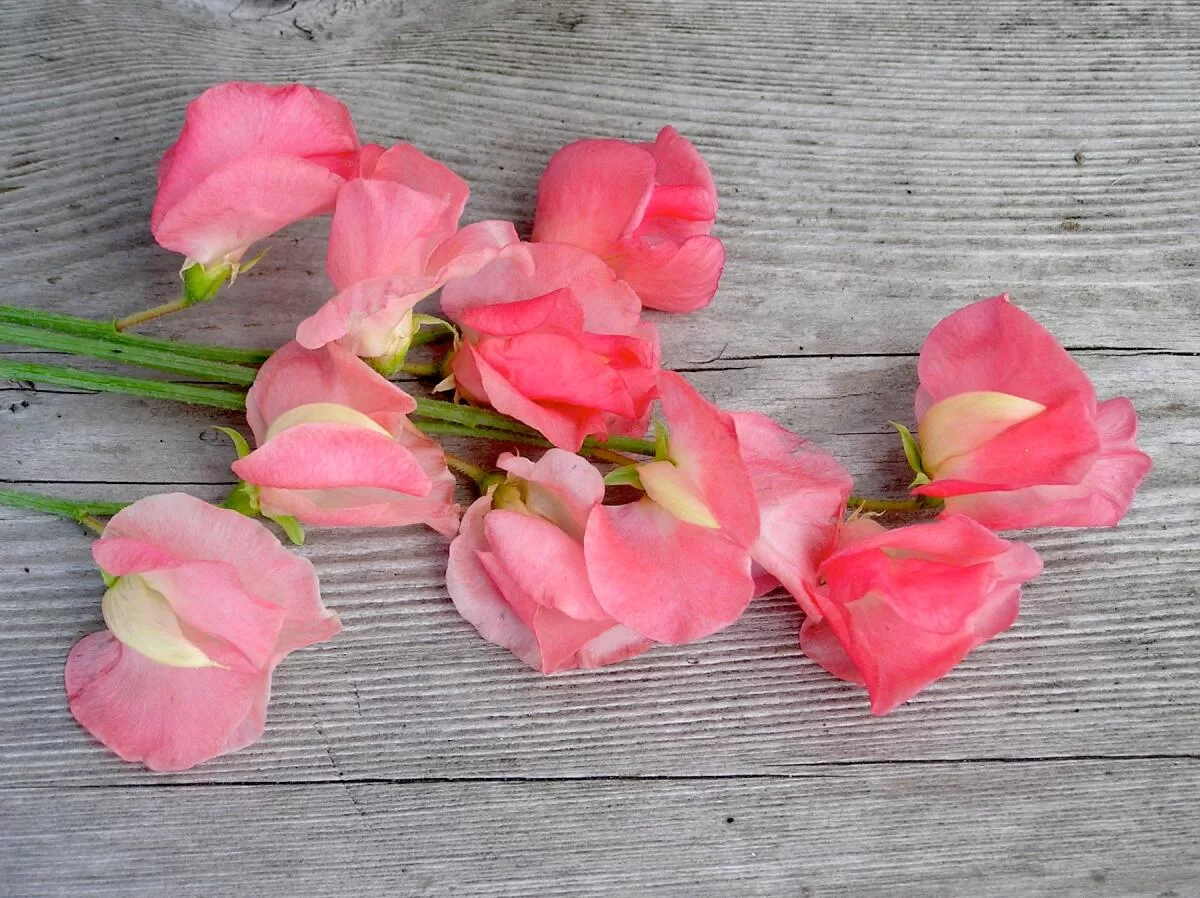• Seeds for sweet peas and native California wildflowers should be planted in November to get the best blooms this spring.
• Sweet peas have a delicate, unforgettable fragrance that has never been successfully duplicated artificially.
• They are easy to grow in the ground and containers, and should be a part of everyone’s garden, if only to imprint their lovely scent on the senses of passersby.
At long last, November. The presidential election hasn’t helped my anxiety, but it’s been great for my garden. I can’t wring my hands while pulling weeds and planting seeds.
It’s also made me think a lot about my father, James Marantos, a patriotic military man who introduced me to the miracle of seeds. He was the son of Greek immigrants, born in tiny Caliente, Calif., and raised in Bakersfield. He spoke only Spanish and Greek when he entered first grade. He ultimately earned a college degree (in English) and fought in World War II, Korea and Vietnam. He was a lifelong Democrat who spent most his career in the Air Force, retiring as a lieutenant colonel.
I so wish we could discuss this election. He died in 2012 just before his 95th birthday, so I can only guess at what he’d say about seeing his beloved country so divided.
But I know for certain what my dad’s final word would be:
VOTE!
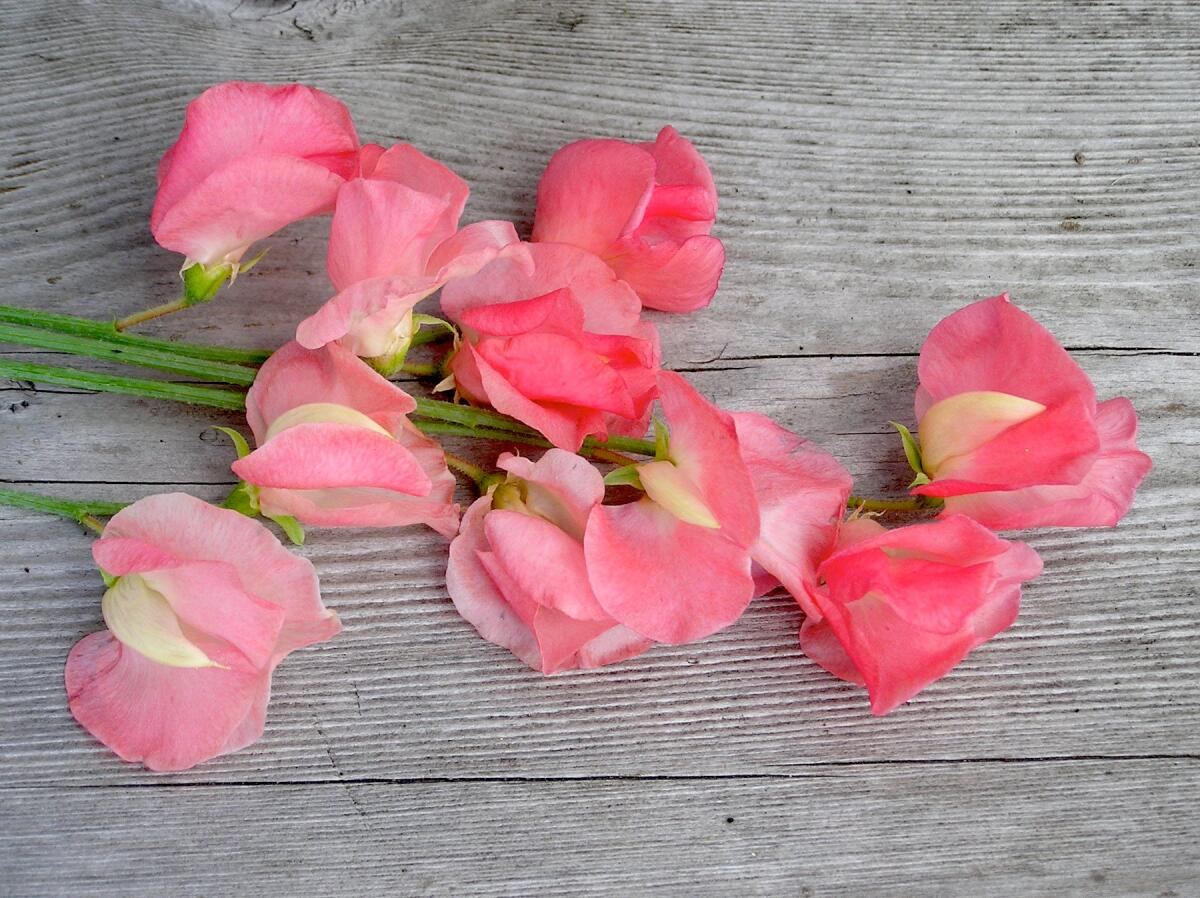
Renee’s Garden describes its Watermelon Heirloom Sweet Peas (an English Spencer variety) as “a shade in between fresh-cut watermelon and ripe rosy peaches.”
(reneesgarden.com)
There are plenty of plant-related activities below to distract you from hand-wringing this month, but first, let’s talk about the seeds you should plant now to create beautiful blooms this spring: native California wildflowers and sweet peas, one of the most delicate and fragrant flowers in the world.
My father introduced me to sweet peas when I was 5, and I was stunned that something so small and fragile could have such a powerful perfume. I believe every child should have the same exposure, to imprint their senses forever with its indelible fragrance.
November is the optimum time for SoCal residents to plant these seeds, even if you’re only gardening in containers. Planting now allows the seeds to take advantage of our winter rains and develop strong root systems. Once temperatures warm up in the spring, the plants can put all their energy into blooms.
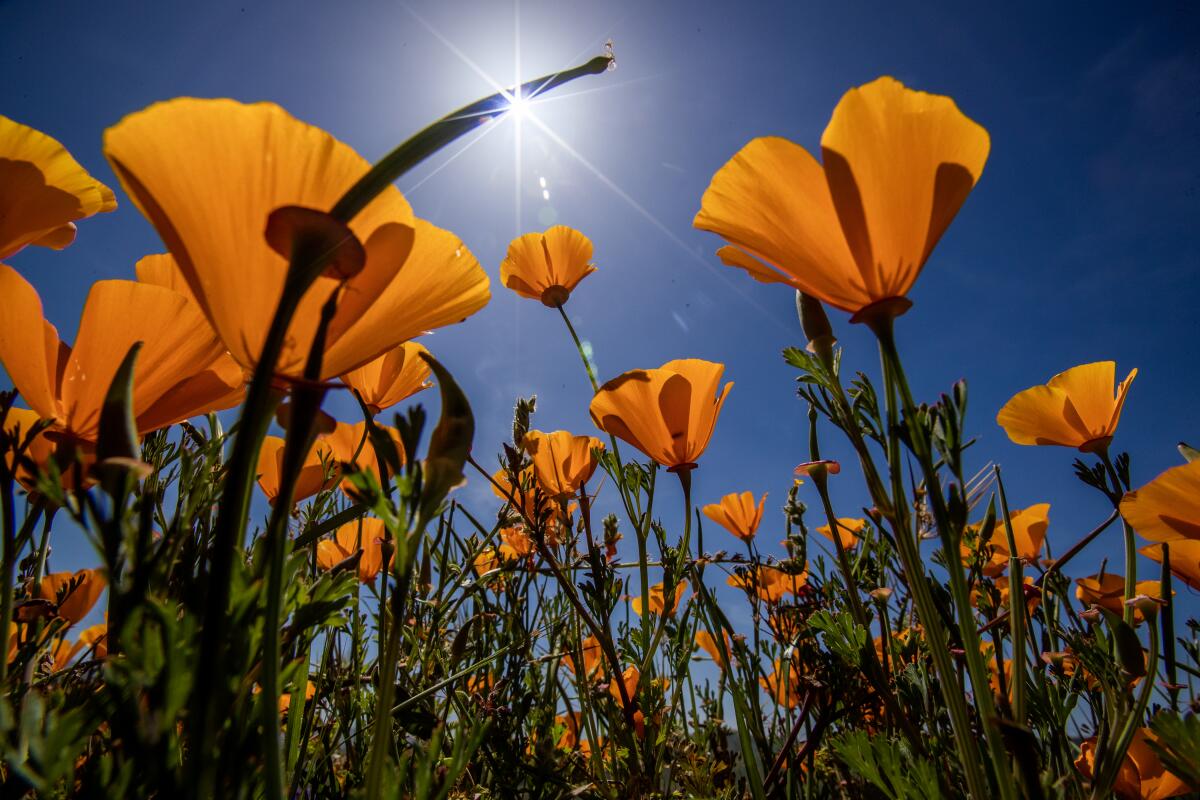
California poppies are the state flower, and one of the easiest and flashiest native wildflowers to grow from seed.
(Allen J. Schaben / Los Angeles Times)
Wildflowers are easy
We have excellent SoCal sources for wildflower seeds at the Theodore Payne Foundation in Sun Valley and the Tree of Life Nursery in San Juan Capistrano, both of which sell their seeds online. The Plant Good Seed Company in Ojai also sells wildflower seeds specific to Southern California.
And one nice bonus about wildflowers: Once they bloom, most will reseed themselves, so you don’t need to keep buying new seeds every year.
The trick to successfully planting wildflower seeds is consistent moisture, said Genevieve Arnold, Theodore Payne’s seed and conservation program manager. Ideally, you mix your tiny wildflower seeds with three parts horticultural sand to one part seeds and broadcast this mix just before a good soaking rain.
But the rains don’t always happen on cue, and most of us don’t have easy access to horticultural sand, so Arnold recommends mixing the seeds with a lightweight cactus potting soil, then scattering it over ground you’ve dampened with a hose.
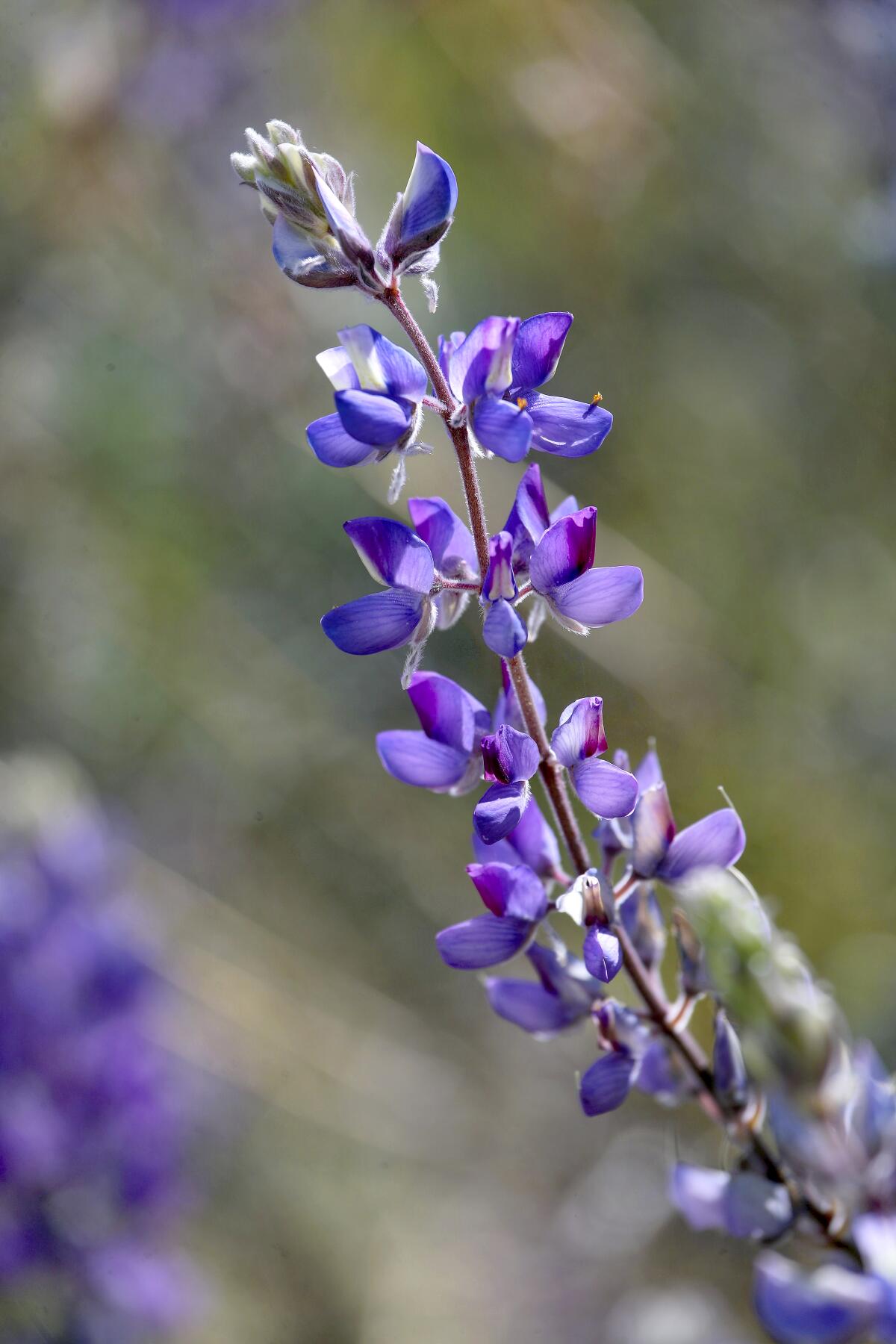
Purple lupines blend beautifully with orange poppies, but look for varieties in yellow as well.
(Brian van der Brug / Los Angeles Times)
You can lightly rake the area afterward, “but it’s key to remember that most California wildflowers should be sown no deeper than an eighth of an inch,” she said. “And if it’s not raining, then lightly water the seeds in,” taking care not to wash them away.
If the rains don’t come, keep the area moist, but don’t soak the site, Arnold said, “because if it’s waterlogged you can create rot or conditions where fungus will form.”
The plants should sprout, but don’t expect much above-ground action until the spring, she said. What’s important is happening underground as the roots get established. If the area where you’re planting is weedy, understand those weeds will be in competition with your flowers next spring, so try to plant on as much bare ground as possible.
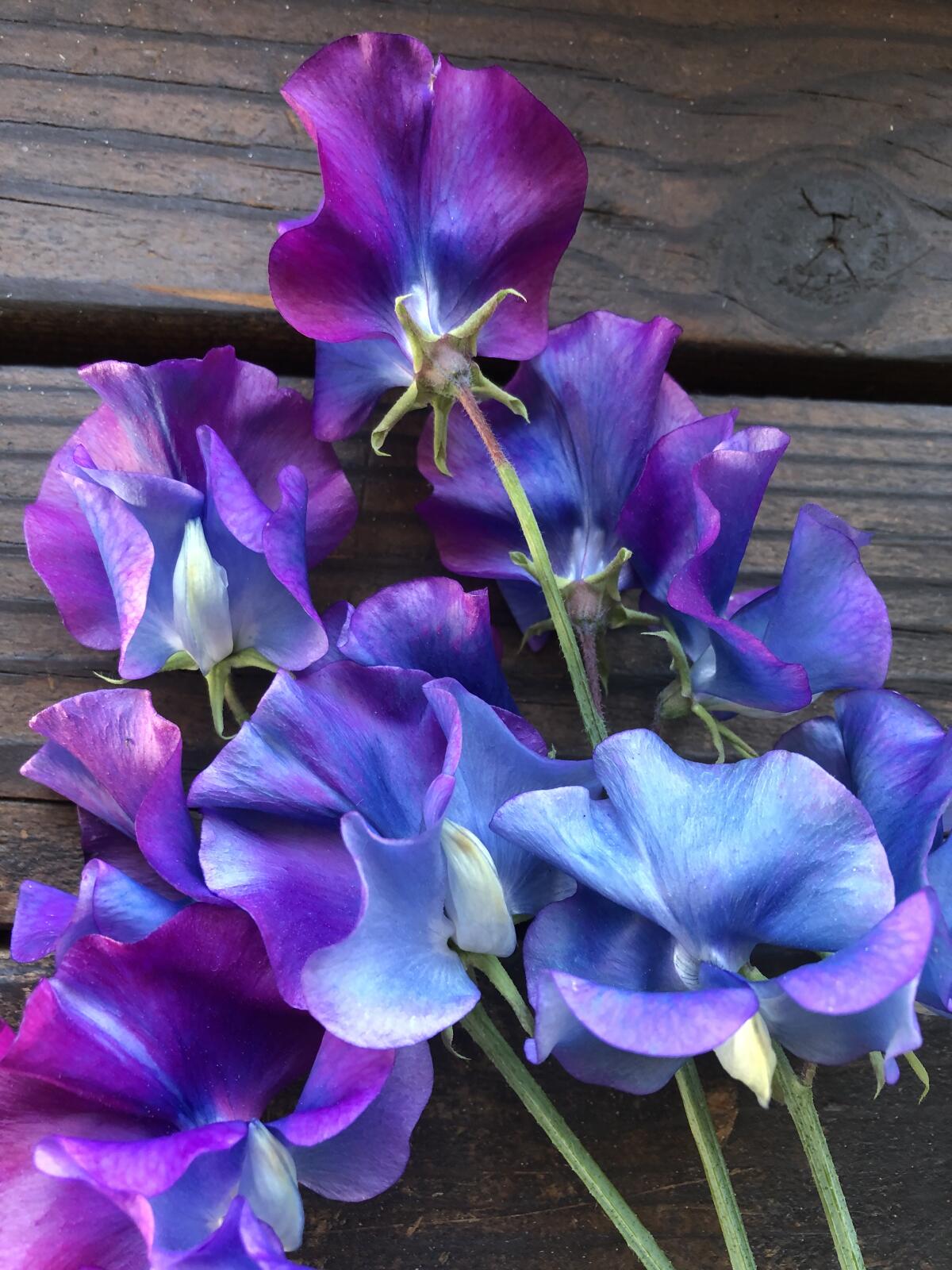
Enchanting Sweet Peas sells seed for this long-stemmed Spencer variety known as Blue Shift, so named for its “mesmerizing color-shifting blooms.”
(Glenys Johnson)
Sweet peas are magic
At least, that’s what I thought the first time I smelled them. The fragrance is not easily described, “but it is unforgettable,” said Glenys Johnson, who’s been been growing and selling seeds for the English Spencer variety of sweet peas through her mail-order business, Enchanting Sweet Peas, for 26 years in Sebastapol, Calif., north of San Francisco.
“People remember the scent from their childhoods; it’s a scent that connects you to other memories even if you can’t describe it,” said Johnson.
Note that all parts of the sweet pea are inedible, despite their yummy fragrance, and the flowers are extraordinary too — delicate crepe-papery blooms growing thickly on vines in a wide range of colors, like creams tipped in violet, dainty pastel pinks, near blues, deep purples and vivid oranges and reds.
The more you pick these flowers, the more they bloom, so you can easily collect many bouquets, and never worry again about air fresheners, since even a handful can fill a room with delicate scent.
“It’s never cloying,” said Renee Shepherd, whose Felton, Calif.,-based nursery Renee’s Garden offers a large selection of seeds online and at many retail SoCal nurseries.
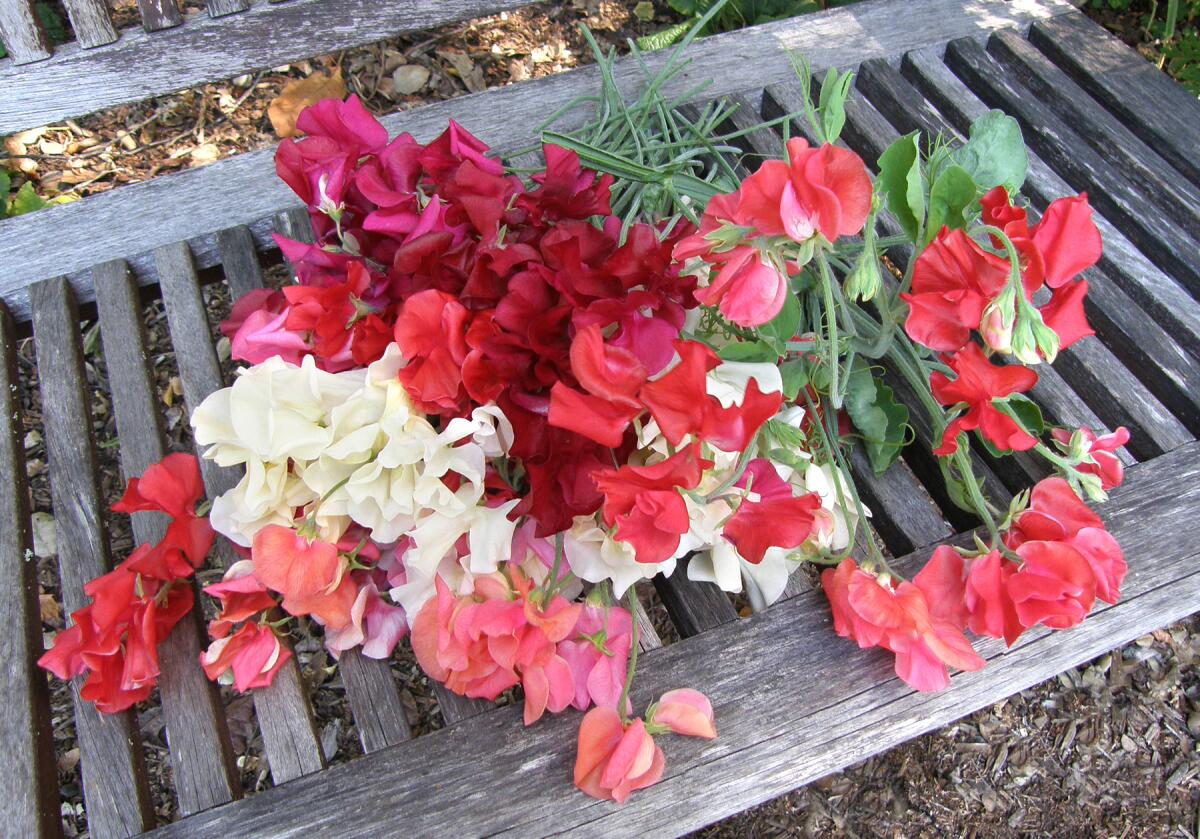
These Fire and Ice sweet peas sold by Renee’s Garden provide a range of vivid colors that make easy — and frequent — bouquets.
(reneesgarden.com)
Sweet pea fragrance “is light, like orange blossoms with a touch of honey, but you have to grow them to experience it,” Shepherd said. “They’ve never been able to make the fragrance into a perfume because it’s so undefinable. People have tried, but it never smells right. You really have to grow the real thing.”
Most sweet peas like to climb, so plant the seeds by a fence or some kind of trellis, even if they’re growing in a large container, unless you choose a couple of windowbox varieties where the sweet peas are bred to spill out of pots. Those varieties are fragrant enough to perfume a patio or balcony, but the flowers are short-stemmed, said Shepherd, so they don’t make good bouquets.
If you want flowers for cutting, choose the long-stemmed climbing varieties — both Johnson and Shepherd offer many colors and styles. (Fig Earth Supply nursery in Mount Washington also sells seeds and seedlings.)
Shepherd said in her experience, the showy Spencer varieties can struggle in hot inland areas, but other varieties flourish even in high-temp spots like Bakersfield.
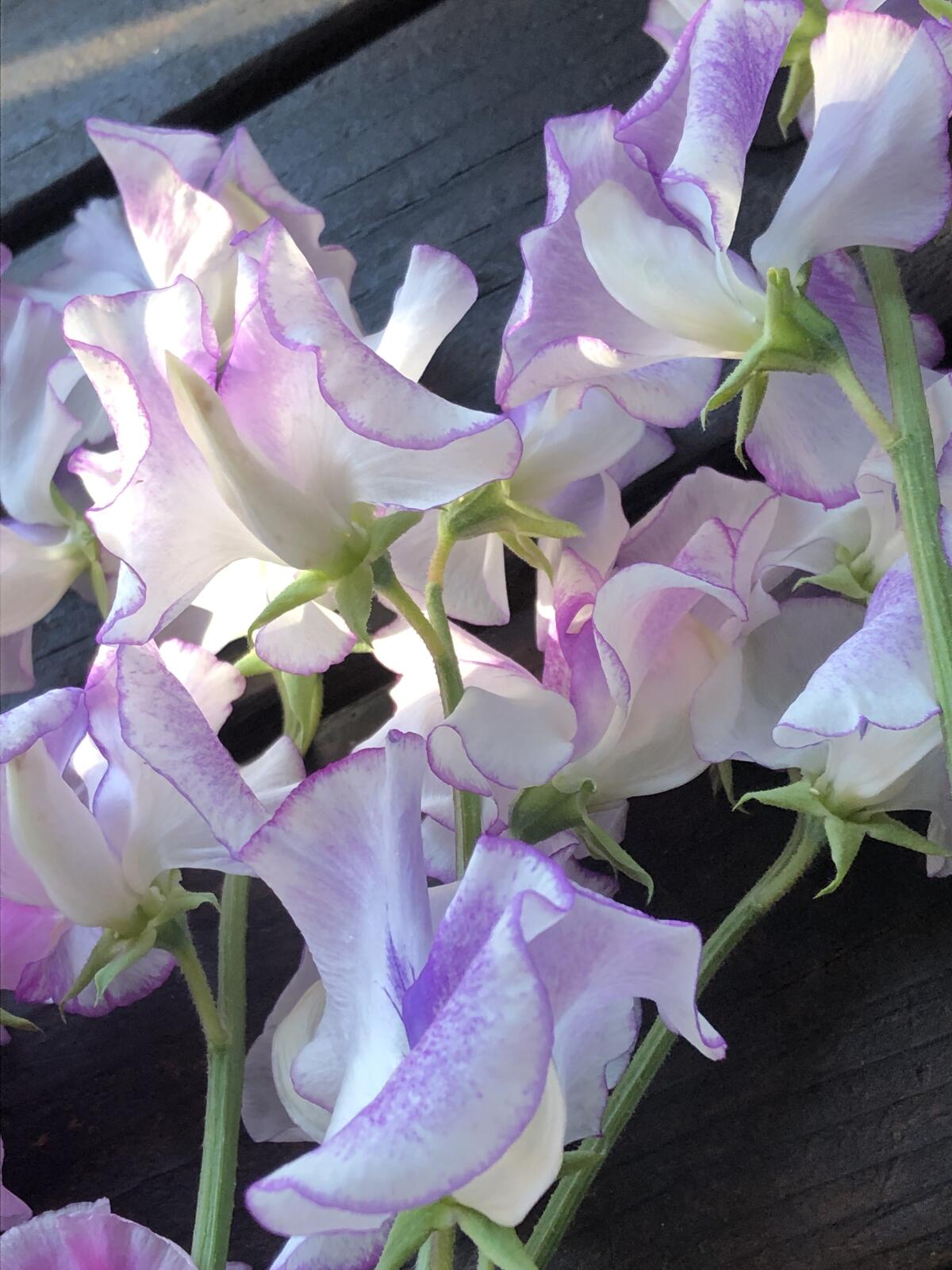
Sir Jimmy Shand, a white, long-stemmed Spencer variety sweet pea with lilac/mauve edging, produces huge blooms with a huge fragrance, said Glenys Johnson of Enchanting Sweet Peas.
(Glenys Johnson)
Johnson likes to use bamboo poles and her teepee pole ring to create a small trellis when she sows seeds in containers. She prefers fabric pots, “the larger the better,” around 30-gallon size, to give the roots room to grow and enough weight to keep the plants from tipping over, since they can grow up to 9 feet tall.
Plant sweet peas about a half-inch deep in compost-enriched soil and keep the area moist but not soggy. As the tiny plants emerge, keep a sharp eye out for birds, gophers, snails and slugs who might find the seedlings tasty, Shepherd said.
If you have a real problem with pests, sow the seeds in flats outside to more easily protect them from critters, Shepherd said, and then plant the established seedlings in the ground in the early spring, when they should be sturdy enough to withstand nibblers.
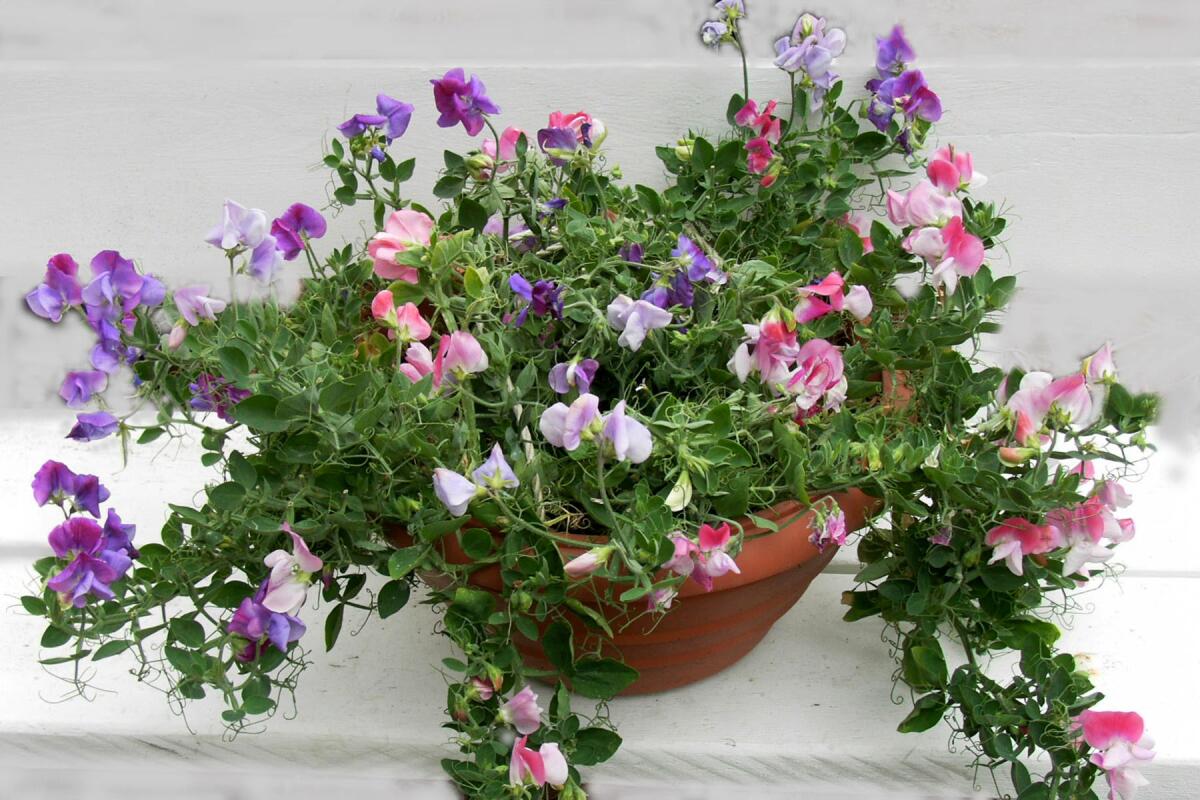
Renee’s Garden sells packets of Windowbox Sweet Peas specifically for growing in containers. This mix is called Color Palette Cupid, and the short stems mean the flowers won’t work well for bouquets, but they still have plenty of fragrance to perfume a patio or balcony.
(reneesgarden.com)
It’s an easy tradition to establish, and you’ll be a hero with your neighbors when you offer them bouquets. “I met a woman who told me she always plants her seeds on Thanksgiving,” Johnson said. “She says she puts her turkey in the oven and her seeds in the ground while the turkey is cooking. It’s a good memory jog.”
Which reminds me: Wishing you all a safe and delicious Thanksgiving with as many friends and family as you can crowd around a table.
Newsletter
You’re reading the L.A. Times Plants newsletter
Jeanette Marantos gives you a roundup of upcoming plant-related activities and events in Southern California, along with our latest plant stories.
You may occasionally receive promotional content from the Los Angeles Times.
Upcoming events
Nov. 2
Ventura County 12th Farm Day, 10 a.m. to 3 p.m., a chance to tour more than 15 farms, ranches and agricultural organizations in Ventura County. The tours are self-guided, and visitors can choose where they want to visit. Tickets are free but must be reserved online in advance. venturacountyfarmday.com
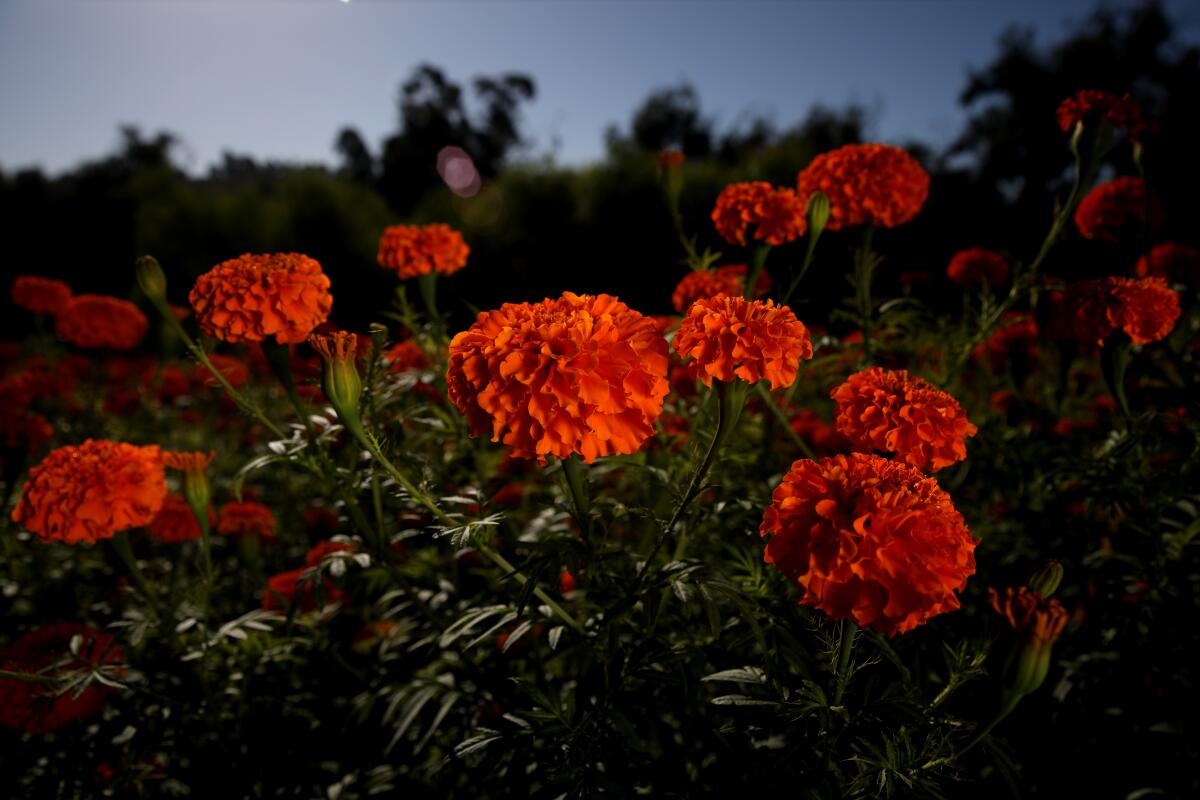
Marigold flowers are a critical part of Día de Muertos.
(Gary Coronado / Los Angeles Times)
2024 Bones, Skulls and Marigolds, 4 to 5:30 p.m. at the Los Angeles County Arboretum in Arcadia, a class for adults about the Day of the Dead, with participants painting their faces into sugar skulls (with artist instruction), dissecting owl pellets to find bones and learning about the botanic and cultural significance of marigolds. Pan dulce and adult beverages provided. Register online, $35 ($30 members). arboretum.org
Nov. 2-3
San Gabriel Valley Chrysanthemum Society Show & Sale, 9 a.m. to 4 p.m. each day in Ayres Hall at the Los Angeles County Arboretum in Arcadia. The show is free with $15 admission to the Arboretum ($11 seniors 62+ and students with ID, $5 children 5-12, free to members and children 4 and younger). arboretum.org
Nov. 2 and 16
City Plants Shade Tree Adoptions, from 3 to 7 p.m. on Nov. 2 at the Día de los Muertos Festival in Boyle Heights; from 9 a.m. to 2 p.m. on Nov. 16 in Crenshaw, North Hills and Watts; and from 9 to 11 a.m. on Nov. 16 in Winnetka. Residents of the city of Los Angeles can adopt up to seven trees for free at these events as long as they plant the trees in the ground on their property. Proof of address required — photo ID with an L.A. city address or an L.A. Department of Water and Power bill. cityplants.org
Nov. 9
UC Master Gardeners of Orange County present Thanksgiving Herbs, 10:30 to 11:30 a.m. at the Food and Farm Lab, Great Park in Irvine. Learn how to plant an herb basket to grow seasonal herbs instead of buying them at the grocery store. This is a demonstration event only; no supplies will be needed or provided. The demonstration is free. mgorange.ucanr.edu
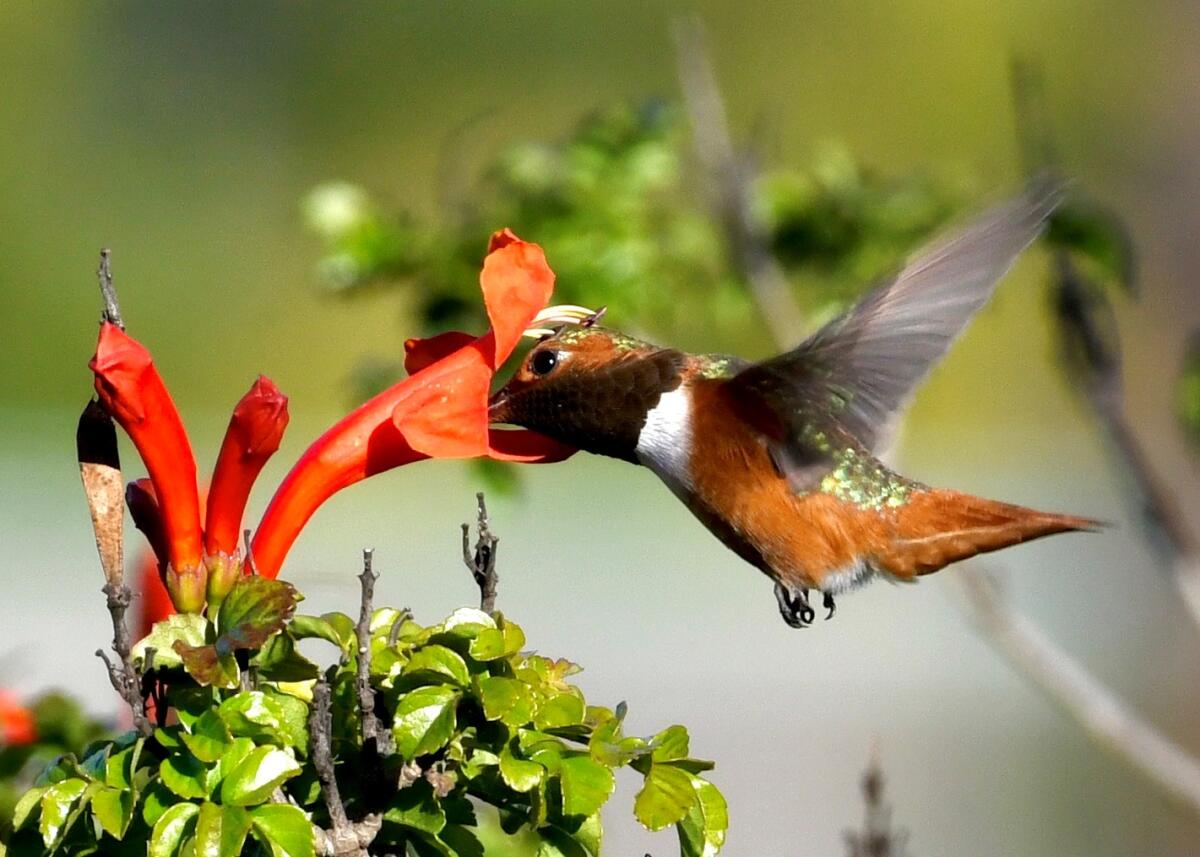
A hummingbird takes a lunch break.
(Stephen Breskin)
Autumn Leaf Crown Workshops, noon to 1:30 p.m. for families with children ages 4-10 and 2 to 3:30 p.m. for adults only. Children must be accompanied by adults during the family session. All materials supplied. Register online. Tickets are $25 ($20 members); a child’s ticket includes free entry for one adult during the family session, but adults who want to make their own crowns during the family session must purchase their own ticket. arboretum.org
Hummingbird Flights: Make Your Own Feeder Using Recycled Wine Bottles, a class from 2 to 3:30 p.m. at the South Coast Botanic Garden in Rolling Hills Estates. Participants can enjoy a flight of three tasters of wine while creating a hummingbird feeder from a wine bottle. Attendees must be 21 or older. Register online. The price of the class includes admission to the garden, $40 ($36 members). southcoastbotanicgarden.org
Nov. 9, 16 and 23
California Native Plant Garden Design, a three-part hands-on workshop taught by L.A. garden designer Steven Gerischer, 9 a.m. to 1 p.m. each day at the Theodore Payne Foundation in Sun Valley. The classes will cover garden styles and design, converting irrigation systems, sustainability and modeling gardens after patterns in nature. Theodore Payne’s introductory online class, “Right Plant, Right Place” ($35/$25 for members), is a prerequisite for taking the design class. Register for the three-part class online, $348.65 (members $295.29) for individuals; $412.67 (members $359.32) for couples working on one project. eventbrite.com
Nov. 9 and 23
Palos Verdes Peninsula Land Conservancy Native Plant Sales, 10:30 a.m. to noon at the George F. Canyon Nature Center in Rolling Hills Estates on Nov. 9 and the White Point Nature Education Center in San Pedro on Nov. 23, selling plants grown by the conservancy’s native plant nursery. Admission is free. pvplc.org
Nov. 10
Transitioning Succulents From Summer to Winter Growers, a talk by grower Keith Taylor at 1 p.m. at the South Coast Cactus & Succulent Society’s November meeting at the South Coast Botanic Center in Rolling Hills Estates. Admission is free. southcoastcss.org
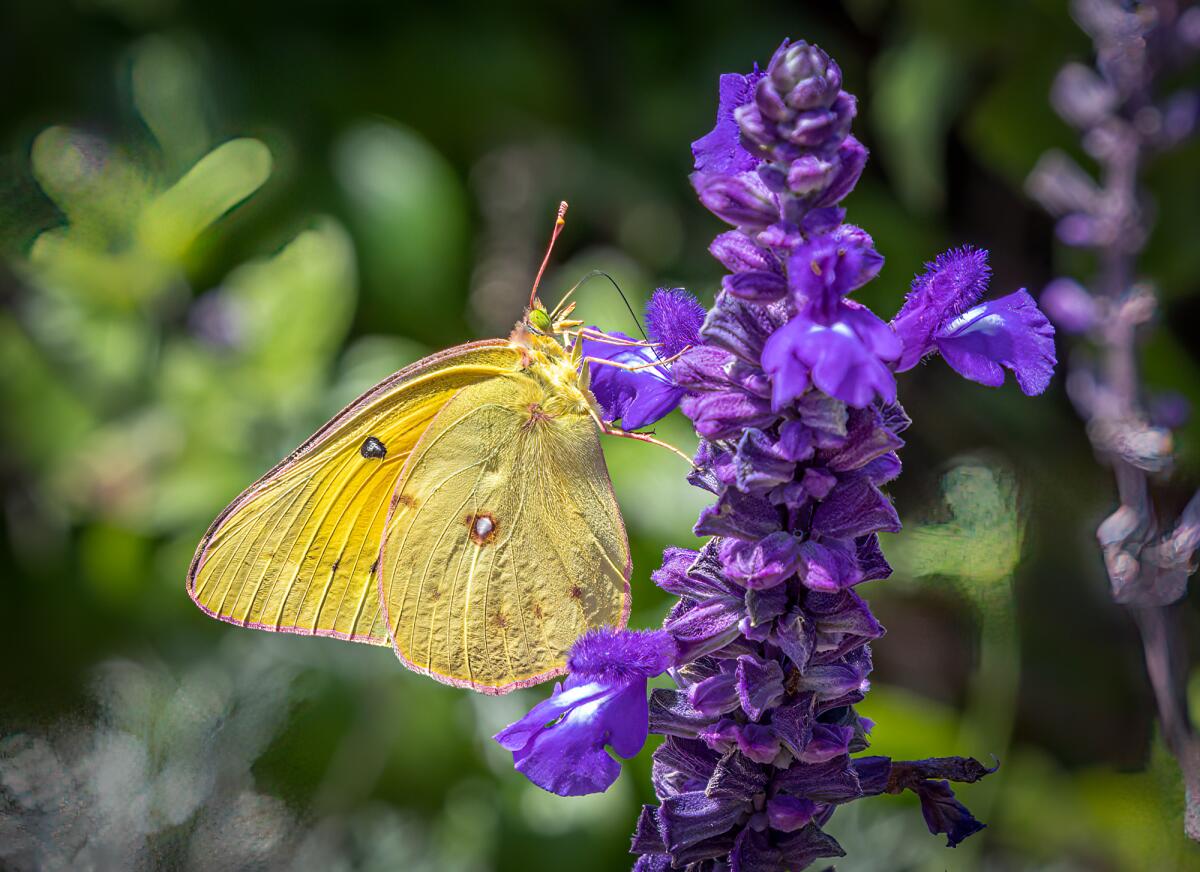
The California dogface butterfly is the state insect.
(Ernie Cowan / For the San Diego Union-Tribune)
Parent & Me: Bug Expedition, 10 to 11 a.m. at the South Coast Botanic Garden in Rolling Hills Estates. Children and their parents go on an expedition to learn about the insects in the garden, with a magnifying glass, pencil and crayons to record their findings. All supplies provided. Register online. The cost for children is $7; the class is free to parents, but parents must pay $15 general admission to enter the garden. southcoastbotanicgarden.org
Nov. 14
Fire-Resilient Gardens: A Maintenance Walk and Talk with Theodore Payne Foundation instructor Erik Blank, 2 to 4 p.m at the foundation in Sun Valley. Learn how to design and maintain landscapes in high-risk fire areas. Register online, $17.85 ($12.51 members). eventbrite.com
Nov. 15
Intro to California Native Plant Garden Design taught by Theodore Payne Foundation Horticulture Director Tim Becker at the foundation grounds in Sun Valley. The class will cover basic landscape design with native plants. Register online, $60.54 ($55.20 for members). eventbrite.com
Nov. 16
Autumn Leaves: Fresh Flower Crowns, 2 to 3:30 p.m. at the South Coast Botanic Garden in Rolling Hills Estates; a class for ages 10 and older to learn to use flowers, leaves and other items from nature to create a flower crown. Register online, $40 ($36 members). southcoastbotanicgarden.org
Native Plant Water Gardening in Containers with horticulturist Andrew Chaves, 2:30 to 4:30 p.m. at the Theodore Payne Foundation in Sun Valley. Learn to create and maintain a water garden with native plants. Register online, $40 ($30 members). eventbrite.com
MiniNature Reserve Installation of Native Plants from 10 a.m. to noon outside the Family Dollar store in Oxnard, as part of the nonprofit MiniNature Reserve’s program to preserve nature in urban areas and beautify small business storefronts with native plants, at no cost to the business, except providing water to get the plants established. Volunteers are needed to help plant. Register online; participation is free. eventbrite.com
Nov. 17
Community Planting Day at Lincoln Heights California Native Plant Corridor, 9 a.m. to noon at 210 S. Avenue 20 between Albion Street and Broadway in Lincoln Heights. Volunteers will work with leader Marie Massa to add more native plants to a strip of city property next to the 5 Freeway once full of weeds and trash. The event is free. instagram.com/ave20nativeplants/
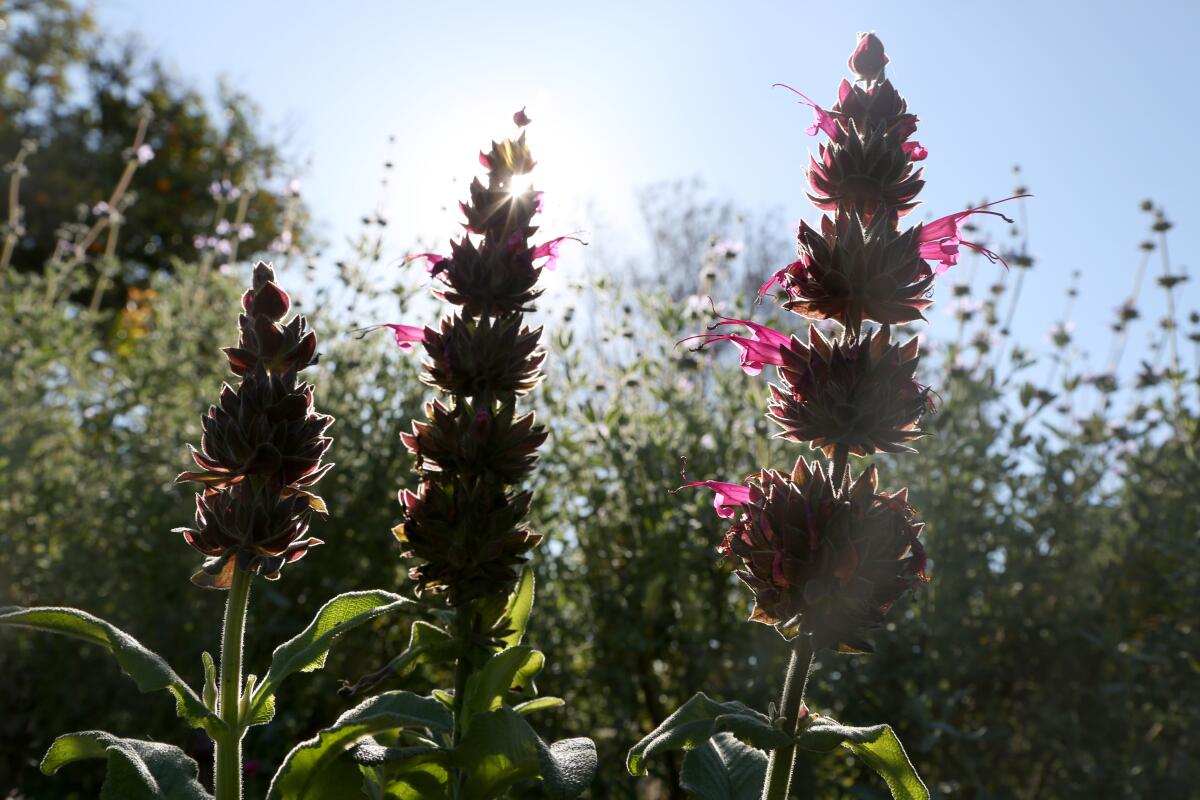
Tall magenta spires of fragrant hummingbird sage, a California native plant, silhouetted against a blue sky.
(Katie Falkenberg / Los Angeles Times)
Nov. 22
Propagating California Native Plant Cuttings, a class taught by Theodore Payne Foundation Horticulture Director Tim Becker from 10 a.m. to 1 p.m. at the foundation grounds in Sun Valley. Students will learn to start and grow plants from cuttings and leave with a flat of 50 starts. Register online, $92.55 ($81.88 members). eventbrite.com
Nov. 23
Botanic Printing on Paper: A Natural Dye Workshop taught by painter Linda Illumanardi, from 2 to 5 p.m. at the Theodore Payne Foundation in Sun Valley. Students will learn how to fold Victorian puzzle books, fill them with California native leaves and flowers and immerse the piece in natural dye. They also will walk through the foundation’s demonstration garden to identify native plants used to create dyes. Most supplies will be provided. Participants are asked to bring scissors, a ruler and any California native leaves or wildflowers they’d like to use in their design. Register online, $92.55 ($81.88 members). eventbrite.com
Marine Park Community Garden Two-Year Anniversary, 9 a.m. to noon in Santa Monica, a celebration open house with activities for children (painting pots and making seed packets) and cooking demonstrations using produce picked from the garden. Expect demonstrations about the garden’s Compost Cooperative. Admission is free, no registration is required. santamonica.gov
Nov. 30
DIY Wreath-Making Party, 11 a.m. to 12:30 p.m. or 2 to 3:30 p.m. at the South Coast Botanic Garden in Rolling Hills Estates. Learn to select and arrange plant materials to create a handcrafted wreath. All tools and materials provided. Register online, $55 ($50 members). southcoastbotanicgarden.org
Consider subscribing to the Los Angeles Times
Your support helps us deliver the news that matters most. Become a subscriber.
What we’re reading
SoCal’s Santa Ana “devil winds” have always been a given for this California native, but I never had a clue how they happened until I read this fascinating article by atmospheric scientist Ned Kleiner. Mind-blowing hint: Those hot, dry, dusty winds start with cold dense air in the high desert of southern Nevada.
“They took Knut’s teacher, you know.” So starts the chilling story by L.A. Times Letters Editor Paul Thornton about his grandfather’s teacher in Norway, Lars Nødtvedt, who was murdered by the Nazis during World War II for resisting the “Nazified curriculum” being forced on the schools. It’s just the kind of story my father would have clipped for us to read, especially with all the threats and accusations against teachers today.
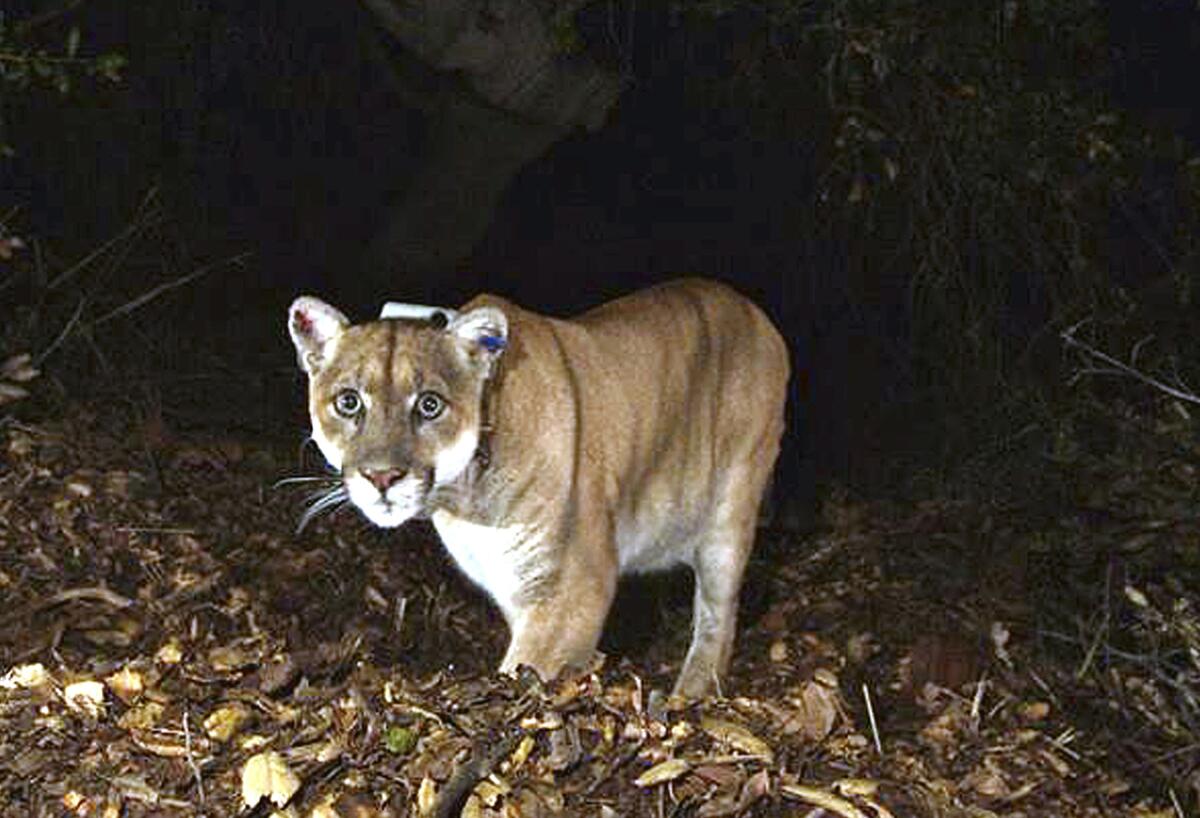
L.A.’s celebrity cougar P-22 died as a result of injuries and illness in 2022, but he looked healthy in 2014 when a remote camera captured him walking through Griffith Park.
(Associated Press)
Remember the Wallis Annenberg Wildlife Crossing inspired by L.A.’s late great cougar P-22? They’ve finally constructed a near football-field-sized structure that spans the entire 101 Freeway in Agoura Hills, but there’s still much to be done before animals can cross. Next step? Adding tons of soil and 5,000 hyperlocal native plants.
And speaking about P-22, here’s a nonpolitical question to chew on over Thanksgiving dinner: If Lassie has one, along with Kermit, Godzilla and now, even Batman, why can’t L.A.’s most famous feline celebrity get a star on the Hollywood Walk of Fame?
